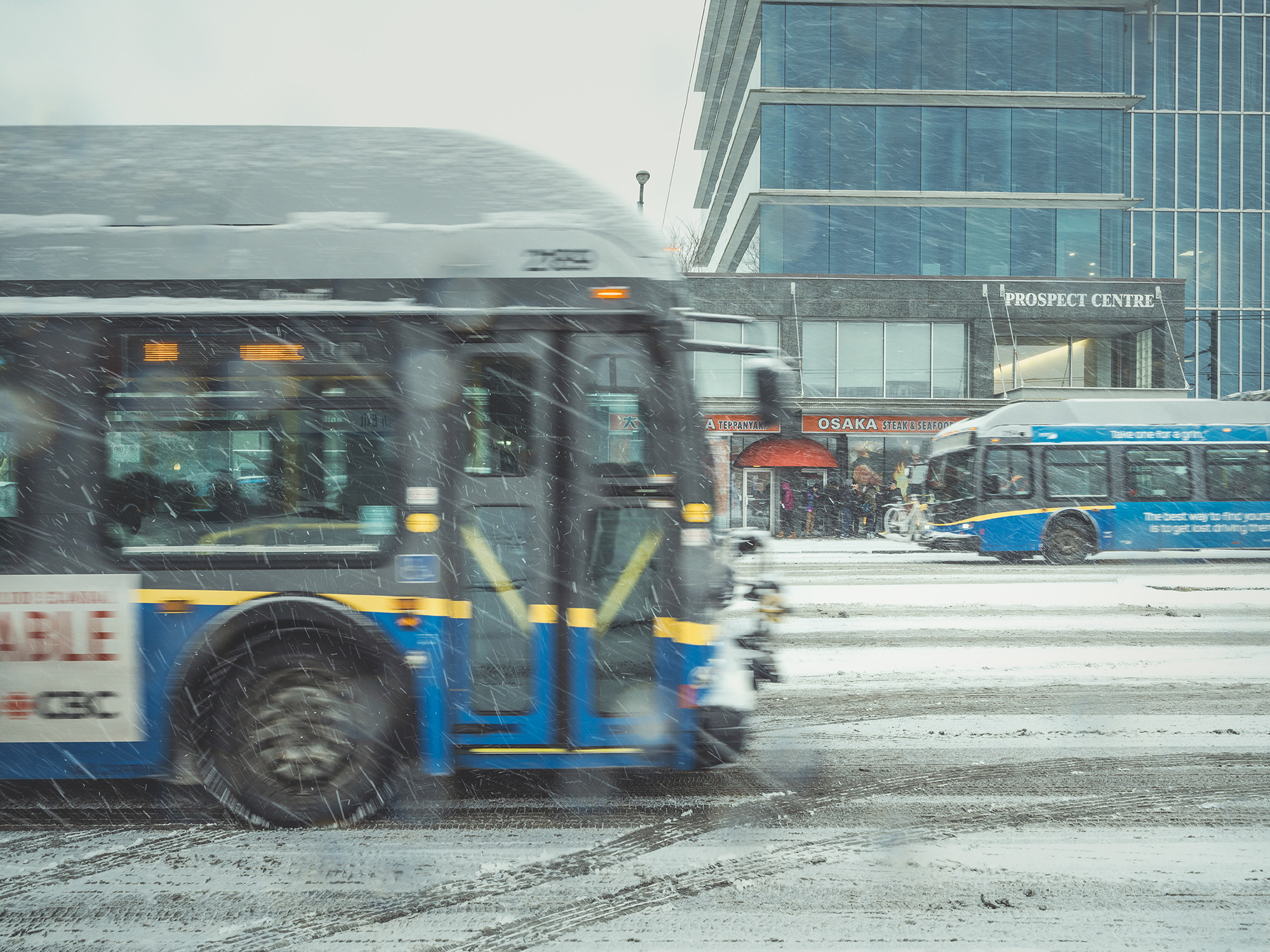TransLink prepared for winter snowfall
TransLink prepared for winter snowfall

With this season’s first snowfall now occurring in Metro Vancouver, TransLink is releasing details of various initiatives which will be deployed to keep transit moving as safely and efficiently as possible.
“Commuting this winter will look a bit different compared to previous years as we navigate these unprecedented times,” says TransLink CEO Kevin Desmond. “With our comprehensive COVID-19 safety and cleaning measures in place, this winter we’ll be working hard to ensure our transit system continues to move safely and efficiently during the colder months ahead.”
COVID-19 Winter Initiatives
- Roping off the control panel area on SkyTrain – SkyTrain cars may have the front section roped off when Station Attendants are required to monitor guideways during snowfall.
- Mandatory mask rule – During the colder months ahead masks will remain mandatory on transit.
- Comprehensive cleaning regime – Continuing with rigorous daily cleaning and sanitizing of transit vehicles.
Bus Winter Initiatives
- Tire socks – Tire socks will be made available for use on Burnaby Mountain and the North Shore.
- Snow Desk – There will be a designated Snow Desk in the Transit Communications Centre to monitor bus routes and road conditions. The Snow Desk also plays a vital role in communicating with various internal and external stakeholders such as Customer Information, Operations, Maintenance, local municipalities, and universities.
- Snow Monitoring – Contractors who plow and shovel at bus loops, exchanges, and SkyTrain stations will be encouraged to upload photos for verification of snow conditions.
- Trolley bus wires anti-icing trucks – Trucks will spray de-icing fluid around the entire 300km electric trolley overhead system when there’s frost or ice risk.
- Additional bus tire traction – Bus Operators can use a snow switch which gives bus tires better traction in snow.
- Bus switch outs – Articulated buses can be switched for conventional buses. 40-foot conventional buses carry fewer passengers, but have better traction in snow, especially on steep terrain.
- Snow routes – Work with municipalities to coordinate our service with priority corridors for snow clearing, should conditions become severe.
SkyTrain Winter Initiatives
- Millennium Line coupling – During heavy snowfall, trains on the Millennium Line will be coupled together (4-car trains) to maximize capacity while SkyTrain Attendants monitor guideways.
- SkyTrain guideway monitoring – SkyTrain Attendants will be positioned at the front of trains during heavy snowfall. This initiative improves reliability on the system by limiting emergency braking, which can be triggered by heavy snowfall.
- Canada Line heat tracing – Heat tracing has been installed on the power rail in sections where heavy ice buildup has previously resulted in service disruptions.
- SkyTrain de-icing – De-icer trains will keep power rails free of ice. During times of overnight snow, some trains will run through the night to keep tracks clear.
- Problem tree and branch removal – Problem trees and branches situated within ten metres of SkyTrain tracks are being removed.
HandyDART Winter Initiatives
- Road condition checks – A formal process has been implemented to assess road conditions for customer pickup.
- Partner communication strategy – If service disruptions or schedule changes occur, there’s now a strategy in place to notify day programs and health partners of these changes.
- Targeting difficult locations – Customers who can be difficult to access during winter are being contacted early to discuss a clearing plan.
- Extra staffing – If there is a reduction to service, each bus will have two drivers to help customers load and unload.





